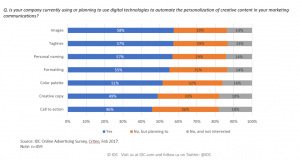Peter Drucker coined the term “knowledge worker” in 1969 in The Age of Discontinuity.
He differentiated knowledge workers from manual workers, forecasting that new industries will employ mostly the former.
A few years before his death in 2005, in Management Challenges for the 21st Century, Drucker stated that accelerating the productivity of knowledge workers was “the most important contribution management needs to make in the 21st century.”
Knowledge work emphasizes the need to solve an ever-changing host of problems. This non-routine, problem-solving ability requires an individual to be a creative thinker who can assimilate new information and share it with others.
Today, every entrepreneur, as well as all of the entrepreneur’s employees, can and should be perceived as knowledge workers—part of the creative class.
Each employee has knowledge and information that can serve your organization. Everyone has ideas that can uplift the whole.
A Shift Toward Collaborative Cultures
The traditional organizational structure with clearly defined positions and a hierarchy of command-and-control, however, inhibits the free exchange of ideas. Here, some individuals are paid to think while everyone else is paid to carry out orders.
Without broad input—without the sharing of knowledge among the collective—decisions are made in a vacuum. And, as a consequence, value creation suffers.
The goal, then, is to create a collaborative culture that promotes the sharing of knowledge. Here, information flows in multiple directions simultaneously and all employees are skilled at creating, acquiring, and transferring knowledge.
Here, information flows in multiple directions simultaneously and all employees are skilled at creating, acquiring, and transferring knowledge.
An organization that is successful in accomplishing this difficult feat will have an unprecedented edge over the competition.
In the final analysis, having employees that can learn faster and collaborate more effectively may be the only sustainable advantage a business can have.
5 Ways to Promote Learning in Your Organization
To accomplish this goal, leaders must establish and foster the conditions necessary for supporting their knowledge workers and becoming a learning organization.
Here are some of the necessary conditions for an environment where knowledge workers thrive:
1) Promote Employee Autonomy
Self-determination theory, as popularized in Dan Pink’s book Drive, highlights that human beings are driven to be autonomous.
This means fostering an environment where employees are self-directed and self-managed. One emerging practice, called
One emerging practice, called holacracy, provides a system for creating a self-managing organization.
The responsibility for productivity must fall on the knowledge worker. As Drucker suggests, “Knowledge workers have to manage themselves. They have to have autonomy.”
2) Commit to Constant Learning and Improvement
Knowledge is perishable. “If knowledge isn’t challenged to grow,” Drucker explains, “it disappears fast.”
Unlimited information access and full transparency are necessary but insufficient.
Knowledge workers must also be empowered to leverage the free exchange of information, transforming it into higher understanding and the creation of new knowledge.
How can your organization design an environment that promotes new knowledge creation and collaboration where employees challenge each other (in nonconfrontational ways) to build on each other’s ideas?
Zappos maintains an in-house library for their employees. Here’s a brief video of CEO Tony Hsieh giving a tour of their library.
3) Establish Psychological Safety
A consistent theme in humanistic psychology is that creativity flourishes in environments where individuals feel psychologically safe.
When employees fear being cut down or marginalized for disagreeing with a colleague or a manager, learning stops.
When people are afraid to ask naive questions or own up to their mistakes, they shut down.
Business cultures that unconsciously promote a fear of failure can not develop a learning organization.
Individuals must feel comfortable to express their thoughts and feelings about their work. (Tools like the Six Thinking Hats Method can be helpful here.)
Addressing this issue is no small task. Fear of conflict runs rampant in most businesses.
I recommend Patrick Lencioni’s Five Dysfunctions of a Team to better understand the importance of building trust to foster effective teams.
4) Celebrate a Beginner’s Mind
This concept from Zen philosophy reminds us to adopt an attitude of openness to new ideas.
Leaving preconceived notions and beliefs at the door when you enter a dialogue or brainstorm with colleagues, helps individuals seek out new ideas and novel approaches to problems.
When employees are encouraged to adopt a beginner’s mind, they are more prone to explore the unknown and take risks.
For an instructional guide with exercises to help you establish a beginner’s mind, click here.
5) Enable Time for Reflection
Learning and change can only occur when your people are given time to reflect, dialogue on, and integrate new information.
They need to have the time freedom to experiment and tinker around with new ideas and perspectives.
In a society that obsessively promotes “bigger, faster, better,” such reflective time is rarely valued.
Instead, employees are overwhelmed or overstressed by deadlines and other pressures, which impairs both analytical and creative thinking.
As a consequence, opportunities are missed, problems are misdiagnosed, and learning is compromised.
If your culture has an unspoken rule that everyone must respond to a text or email immediately, you are killing creativity and greatly reducing productivity.
It’s important to determine rules for what’s actually urgent. If every email and text are urgent, then nothing is urgent.
The 21st Century Learning Organization
Creating a fully integrated learning organization comprised of knowledge workers was an ideal Drucker began envisioning over 40 years ago.
Today, it’s an imperative initiative for any business leader committed to competing and thriving in the years ahead.
Published on ceosage.com.
Business & Finance Articles on Business 2 Community(34)






